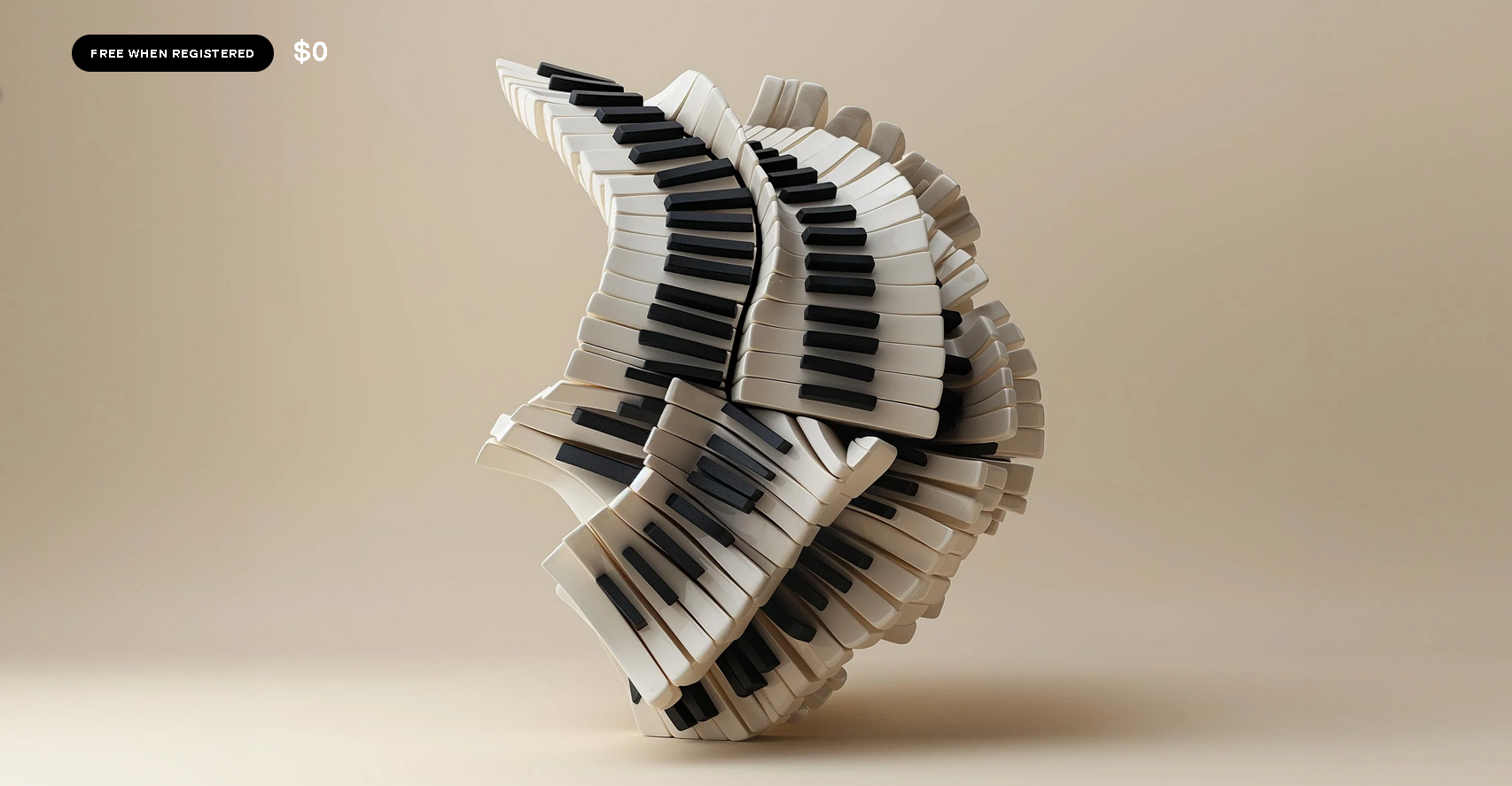Last week, the Soundpaint website has released an extensive new library to the platform’s growing free section of VST instruments and samples.
The unique VSTi – labeled as the Plucked Grand Piano and compatible with the free Soundpaint engine – features this interesting blend between a piano and harpsichord. Well, not an actual harpsichord (as in layering two different instruments) – but a physical replication of the sound, performed on the piano.
Samples are of a mechanically manipulated elite-grade Kawai grand piano, that according to the developers was rented especially for the project.
Painting the Sound of the Renaissance
The instrument, quite successfully, captures the warmth of the Kawai piano but also the “harsh”, bright, resonating timbre that is produced by harpsichords – and it does so very charmly, if I may say. But it’s not only the harpsichord that it resembles. You may also compare it to other classic string-based instruments from the Renaissance-Baroque periods, such as the smaller scale clavichord and the handheld lute guitar, or possibly the hammered dulcimer.

To achieve the distinct, characterful sound of the Plucked Grand Piano, and specifically the Plucked Grand articulation that’s included, the Soundpaint developers went on and added nylon-made guitar picks (plectrums) in order to pluck the piano strings instead of “hammering” them conventionally. The aim was, in a way, to imitate the plucking mechanism of harpsichords – but make no mistake, this piano, although on the brighter side, is much softer sounding than the 16th century instrument (and plus, it has velocity-sensitive keyboard dynamics, which authentic harpsichords don’t).
For the 2nd base articulation, which is the Hammered Grand labeled patch, the developers used these very small, miniature scale metal-made hammers in place of the regular felt-covered wooden piano hammers. The result, as expected from the materials in use, is a fairly bright (and metallic) piano sound.
Hammered vs. Plucked
Compared back-to-back, I have to say that I quite tend to prefer the Plucked Grand articulation over the Hammered Grand articulation, as the latter – unfortunately – doesn’t feel as playable from a sheer performance perspective. They both sound good and authentic, especially in the mid-high ranges, but the first one just feels a bit more cohesive and usable as an all-around instrument.
Timbre-wise, the Plucked articulation is more delicate than the resonant Hammered Grand – and the sound is almost crystal-clear, tonally closer to a piano. Actually, at times, it almost sounds like one of those early piano models from centuries and centuries ago. You can really feel the harpsichord roots and undertones in it. This piano sure gives that “prototype” kind of vibe – but in a good way. It’s raw and it’s gritty, just as one would expect such an instrument to be.
Extra Patches & FX Parameters
One thing that I would find out about only later during the making of this review post is that there are actually more than just two patches that you can load up and work with.
Apparently, the Soundpaint engine has this layer-based interface that allows you to connect different instruments and FX elements all at the same time. It works similarly to the Multi Rack mode in Native Instruments Kontakt, however in Soundpaint the features seem to be more in-depth and sound design options are extensively more advanced for the user.
These extra patches/presets can be accessed through the Mains section and they provide a variety of creative instrument combinations, articulations and effect-based manipulations.
Parametric features in the effect section include your usual ADSR parameters, but also more sophisticated audio FX modules like sample offset (with a particularly interesting reverse-play capability), several voicing modes and pitch manipulations, LFO modulations, spectral filters, a MIDI arpeggiator and of course the standard reverb & delay.
Cons
Now, the thing that both of the two main articulations lack is with no doubt better equalization. The lows and the bass frequencies are way too present and need to be reduced quite extensively – which is a bit of a pity really, because it forces you to make EQ adjustments on the go instead of just concentrating on the playing.
Soundpaint
As far as sample dynamics and sampling depth, although not including mixable microphone signals, this Plucked Grand Piano does seem to offer multi-samples and dynamic velocity layers as well as differing round robins/note variations. These are generated mainly in the Soundpaint hybrid sound-processing environment – which feeds the acoustically recorded samples through various digital manipulations* and synthesized audio effects in real time.
* Some features (like brightness control/expression dynamics) are automatically mapped to your MIDI controller’s mod wheel.
The Soundpaint platform functions both as a library manager and as a stand-alone player (sampler). The engine, owned, developed and operated by 8Dio, is compatible with Windows (32/64-bit) and macOS. Supported plugin formats are Standalone, VST, VST3, AU and AAX.
About 700MB of free disk space are required in order to install the Plucked Grand Piano.
As a side note, you should also check out the also free 1928 Vintage Grand Steinway concert piano VST for Soundpaint.


